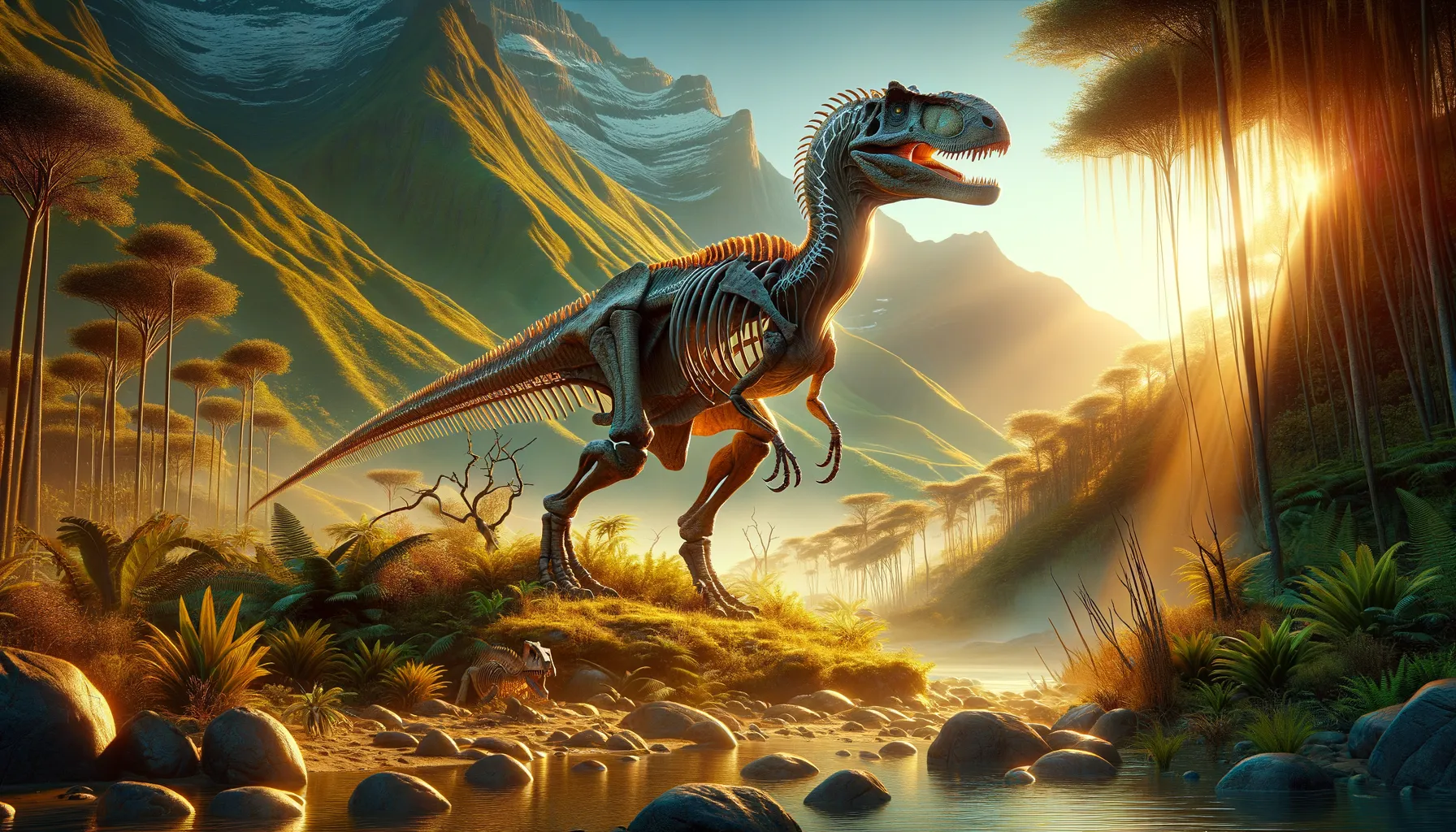
Dubreuillosaurus
A nimble predator from Jurassic France!
Period
Jurassic
Length
About 6 meters long (20 feet).
Height
Approximately 2 meters at the hip.
Weight
Estimated at around 500 kilograms (1,100 pounds).
Dubreuillosaurus was a medium-sized theropod dinosaur that lived during the Jurassic period. Its fossil remains were first discovered in France, and it is known for its unique skeletal features that distinguish it from other similar species. As a carnivore, this dinosaur likely played a role as a predator in its ecosystem, hunting small to medium-sized prey. Its physical structure suggests it was well-adapted to capture and handle its food efficiently.
Diet
Dubreuillosaurus was a carnivore, preying on smaller dinosaurs and possibly scavenging. Its diet mainly consisted of meat, which it hunted with sharp teeth and claws.
Hunting
It likely employed ambush tactics or quick, short chases to catch its prey. Its physical agility and keen senses would have been crucial for locating and capturing animals.
Environmental challenges
Dubreuillosaurus lived in a competitive environment with numerous other carnivorous dinosaurs. Changes in climate and vegetation would have affected prey availability and distribution. It also faced competition from other predators, impacting its hunting success. Resource scarcity could have driven behavioral adaptations, influencing its survival.
Speed
Moderate, likely similar to other theropods.
Lifespan
Estimated to live around 20 to 30 years.
First discovery
Found in France in the early 1990s.
Fun Facts
- Dubreuillosaurus lived during the Middle Jurassic period, around 170 million years ago.
- This dinosaur was discovered in France, making it an important part of European dinosaur history.
- Dubreuillosaurus was a carnivorous dinosaur, meaning it primarily ate meat.
- The name Dubreuillosaurus is derived from the village of Dubreu, close to where its fossils were found.
- Despite being a predator, Dubreuillosaurus wasn't the largest meat-eating dinosaur of its time.
- Its fossils were first discovered in 1998, a relatively recent find in paleontology.
- Dubreuillosaurus is known from only a few fossilized remains, which makes it a bit of a mystery dinosaur.
Growth and Development
This dinosaur probably had a relatively fast growth rate, reaching maturity within its first decade. Its bones suggest periods of rapid development, as seen in other theropods. Juveniles were likely more vulnerable to predation and had to rely on their speed and agility to avoid danger. As they matured, they developed more robust physical features.
Habitat
Dubreuillosaurus inhabited semi-arid regions with seasonal rainfall, possibly living near river systems or coastal areas. The diverse flora of the Jurassic period provided plenty of cover and resources for both predator and prey. This environment allowed it to exploit various ecological niches. Its adaptability to varied habitats may have contributed to its evolutionary success.
Interaction with other species
As a predator, it primarily interacted with prey species, influencing their population dynamics. Dubreuillosaurus likely had minimal competition from larger theropods that preferred bigger prey. Its interactions with other species would have involved territorial disputes and predator-prey relationships. Fossils indicate that it coexisted with a diverse range of dinosaur species.
Natural lifespan
Dubreuillosaurus's natural lifespan was likely two to three decades.
Reproduction
Reproduction involved laying eggs, likely in nests made of vegetation or in shallow depressions. Parental care was probably minimal after hatching, with hatchlings quickly becoming independent. Clutch sizes and incubation periods remain speculative but would reflect adaptation to environmental pressures. Fossil evidence of nesting sites is yet to be discovered.
Social behaviour
Dubreuillosaurus may have exhibited solitary behavior, as seen in many other theropods. However, temporary groupings could have occurred for hunting or mating purposes. Evidence of complex social structures is limited, but interactions with conspecifics were likely part of its daily life. Its behavior was shaped by survival needs and reproductive strategies.
Fossil locations
Fossils of Dubreuillosaurus have been predominantly found in Normandy, France. These locations suggest it was part of the rich faunal community of the Jurassic seas of Europe. The discovery of its remains has provided significant insights into the diversity of European theropods. Ongoing excavations continue to reveal more about its distribution and evolutionary history.
